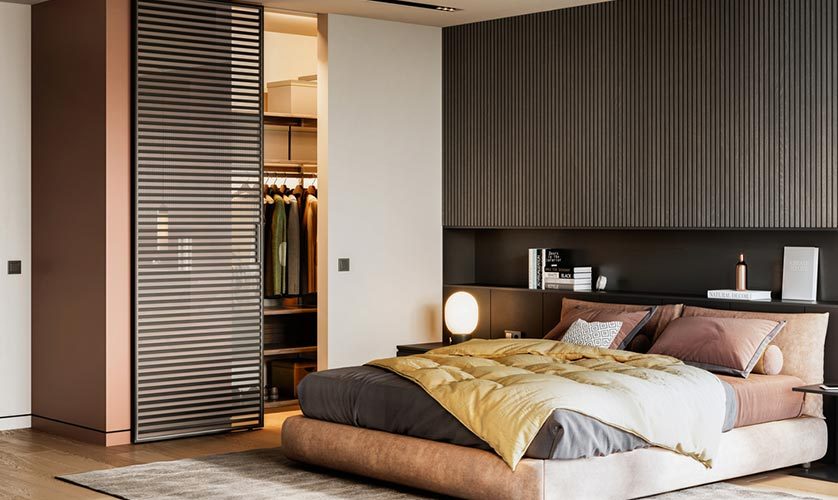
The objective of making the bedroom more accessible is to create a space that’s both functional and comfortable for individuals with varying levels of mobility. Trusted general contractor DreamMaker Bath & Kitchen of Northwest Arkansas takes a look at how universal design concepts can help homeowners achieve this vision of a more accommodating home.
Incorporating Universal Design Principles
A bedroom with universal design principles is paramount. This isn’t simply about adhering to Americans With Disabilities Act (ADA) guidelines (which are often more geared towards public and commercial spaces) but rather about tailoring your private sanctuary to meet specific needs while ensuring longevity and usability for everyone, regardless of ability.
Space Optimization for Mobility
Ample space is the cornerstone of accessible remodeling. The bedroom, in particular, should have enough clearance to allow at least a 5-foot turning radius for a wheelchair, though this may be adjusted based on the room’s layout and furniture arrangements. Minimizing clutter and choosing functional furniture are key tactics in maximizing maneuverability.
Accessible Entrances and Pathways
Doorways should be a minimum of 32 inches wide to accommodate wheelchairs, with a straight approach for ease of access. Consider more accessible door options like pocket doors, barn doors, or even opting for a doorway without a door. Levers should replace traditional door knobs for easier operation.
Smart Storage Solutions
For closets and storage, implementing adjustable rods, lower shelves, and sliding doors can make a significant difference. Thoughtful placement of hooks and storage cubbies at various heights encourages independence and ease of use for individuals in wheelchairs or those with limited mobility.
Flooring for Safe and Easy Movement
Choosing the right flooring is critical for safe and easy movement. Hard surfaces like wood, laminate, or tile are recommended over carpeted floors to ease wheelchair mobility. Rugs, if used, should be secured and lie flat to prevent tripping or wheel obstruction.
Furniture and Fixtures Adjustment
Furniture like dressers should be low with easy-to-operate handles or pulls. Beds should be at an optimal height—usually 20 to 23 inches from floor to bed base—to match standard wheelchair seat height for seamless transfer. Sophisticated designs now include height-adjustable bed frames to cater to individual preferences.
Leveraging Technology for Comfort and Control
Utilize advancements in technology to enhance the user experience. Smart home devices can provide control over lighting, temperature, and entertainment systems through voice commands or accessible controls, ensuring those with physical limitations can operate their environment without requiring physical reach or mobility.
Lighting that Accommodates Visual Needs
A carefully planned lighting strategy aids visibility and reduces glare. Ambient lighting is essential, but it should also be supplemented with task lighting for reading and other activities. Consider dimmable features and even motion-activated low lighting for nighttime navigation.
Let’s Start a Conversation!
DreamMaker Bath & Kitchen of Northwest Arkansas is poised to assist in bringing these design ideas to life with a focus on quality, functionality, and beauty. Our experienced team understands the nuances of creating a space that is not just accessible but truly comfortable and inviting. If you’re looking to remodel your bedroom to be more accommodating for all abilities, look no further than your trusted local home remodeler in Rogers, AR.
Call us at (479) 579-9800, or complete our online form to reach our design experts. We work with homeowners around Maysville, Centerton, Pea Ridge, Cave Springs, Decatur, Garfield and surrounding communities.



